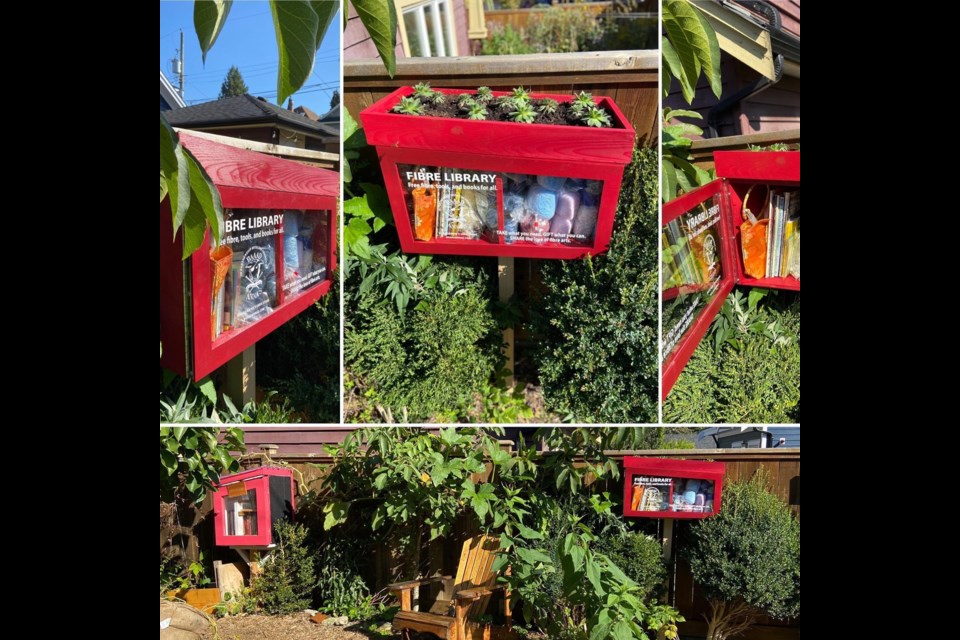These days it’s a common occurrence to be strolling down a residential street and happen upon a comically-large birdhouse overflowing with books. Community libraries, with their "take a book leave a book" policy, have become a familiar and comforting part of our neighbourhoods.
Now, thanks to a group of enthusiastic Metro Vancouver crafters, there is an equally comforting companion for these boxes—fibre libraries.
The concept is the same but instead of trading novels people are trading yarn, textiles, and other supplies.
“Everyone has extra materials that they may not use or need,” says Paula Lindner, owner of East Hastings yarn store Baaad Anna’s (she took ownership from Anna in 2015).
Supplies can be quite costly, says Lindner, so these pop-up cubbies make fibre arts more accessible, which has always been a priority for the store.
“We have a strong history and foundation in community development and bringing fibre arts to the community,” she shares. The idea for the fibre libraries was a natural progression of that work.
During COVID a knitting group would assemble at Baaad Anna’s to make clothes for other people and Paula would share blog posts about their progress on various projects. The response had her thinking about what other non-profit fibre arts projects could be out there.
Inspired by the growing interest in neighbourhood seed libraries the idea of little fibre libraries was born.
Baaad Anna’s doesn’t build the fibre libraries, they are entirely community-led, but the store does facilitate and assist. Small neighbourhood grants were announced in February 2021 to fund projects like these and Lindner encouraged people to apply to help build their library and the store offered resources to assist with the application process.
Once built, Baaad Anna’s existing fibre upcycling initiative helps stock the libraries with a large donation starter pack or if the library runs out of supply. “Because they’re so new more people are taking than leaving,” she says, but the goal is for them to become self-sustaining circular textile economies.
Baaad Anna’s also created an interactive Google Map that is regularly updated to help people locate their nearest fibre library and offer a vinyl sticker that people can use to delineate it as a fibre library as opposed to a seed or book library.
“It seems to strike a chord,” she says of the project which has 12 confirmed libraries across the Lower Mainland with four more on the way.
Lindner is buoyed by the stories of people coming together to build and maintain the boxes. The Commercial Drive box was a collaboration between a group of friends who used their individual resources as a woodworker, promoter, and host respectively to make their library a reality.
A Girl Guide in West Vancouver who wasn’t even part of the knitting world heard about the little fibre libraries and decided she wanted to build one for her community badge. Together with her father they put it together but didn’t have anywhere to host it. “It’s in front of my house,” says Lindner.
One of the North Vancouver libraries is a fibre and seed library combo made by another father and daughter team.
Knitters, crocheters, felters, and sewers across the Lower Mainland find your nearest little fibre library here:



